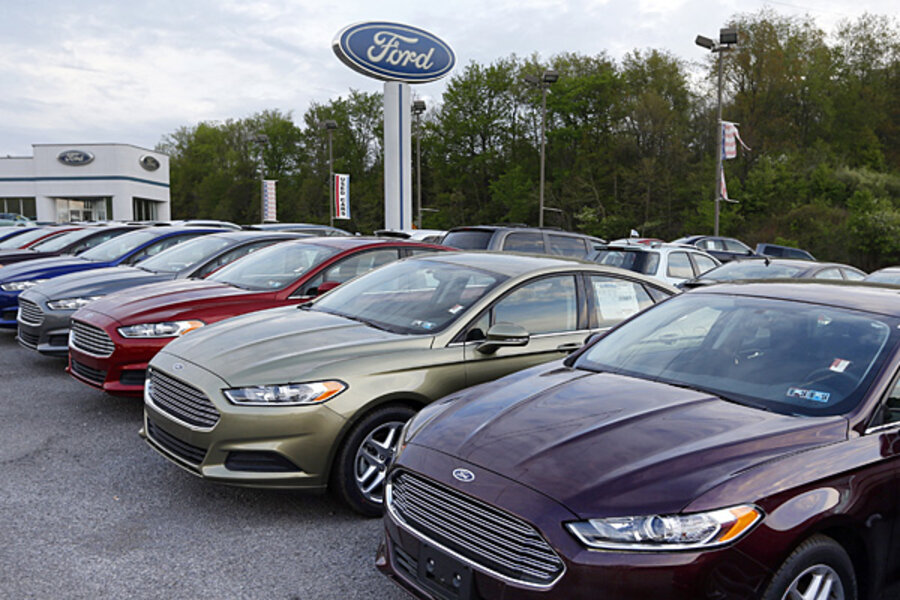June auto sales: Major automakers see gains, and a surprise big mover
Loading...
Auto sales had a standout month in June, with industrywide totals reaching their highest levels in six years. As in May, pickup trucks fueled much of the increase, a good indicator for both the auto industry and the US construction sector.
Automakers sold about 1.36 million vehicles in the US last month (a 6 percent increase from 2012), and set a pace to sell 15.5 million vehicles this year if conditions hold steady, according to projections from auto industry website Edmunds.com. The Detroit automakers continued their respective streaks: Ford had the biggest year-over-year gain of the Big Three, with sales rising 13 percent since 2012. Chrysler and General Motors also fared well, with 8.2 percent and 6.5 percent annual gains, respectively. Chrysler extended its streak of monthly year-over-year sales gains to 39 months.
"Once again, American consumers are shrugging off the noise out of Washington about the easing of economic stimulus and potentially higher interest rates, at least for now," Edmunds senior analyst Michelle Krebs said in the report. "June is proving to be a great month for seeming opposites: small cars and utilities, as well as full-size pickup trucks."
A robust source of the annual growth for the Big Three came from pickup trucks, continuing a trend that has persisted since the beginning of the year. Sales of Ford’s F-Series pickups rose 24 percent from 2012; Chrysler’s Ram increased 23 percent, and GM had a pair of pickups that were big movers: the Chevrolet Silverado and the GMC Sierra (29 percent and 33 percent gains, respectively).
In addition to being good news for the auto industry, pickup sales are an important indicator for the housing sector. As demand for construction has ramped up this spring, home builders and contractors are buying more full-size pickups – a trend that analysts and those in the industry expect to persist as the housing recovery continues apace.
But for Ford, the sales increases went well beyond pickups. The automaker’s “small cars” division, which includes the Fiesta, Focus, and C-Max, posted a 39 percent sales increase from 2012. And the Escape compact SUV had its best sales month ever, with 28,694 units sold.
Major Japanese-owned automakers Toyota, Nissan, and Honda also fared well. Toyota posted a 10 percent annual gain, far more than analysts expected. Honda sales rose 9.7 percent, despite a huge decline in its luxury Acura division. Nissan had a 12.9 percent gain, thanks to robust sales of the Altima sedan. The company’s electric Leaf sold 2,225 units in its second-best month ever.
But none could top the impressive numbers posted by Subaru, a much smaller Japanese automaker. Subaru sales rocketed 42 percent from 2012 to 39,235 vehicles. The company’s retooled Forester SUV and Outback crossover models led the charge.
“We are thrilled to close the first half of 2013 with such record numbers," said Thomas Doll, president and chief operating officer of Subaru of America, Inc., in a press release. "Our products are being well-received and we are looking forward to adding Subaru's first-ever hybrid vehicle to our product line-up later this year."








